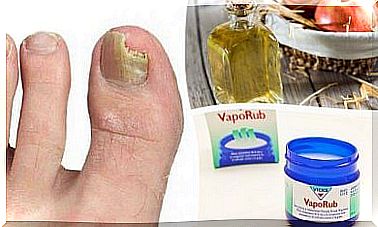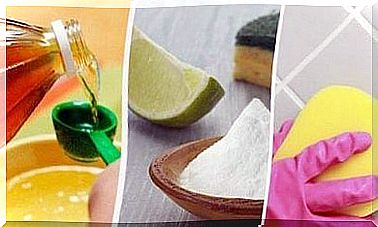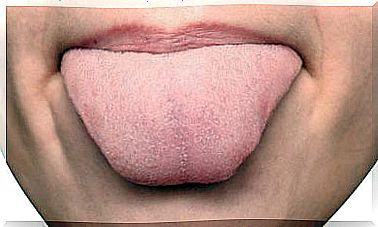Basic Care For Atopic Eczema In Babies
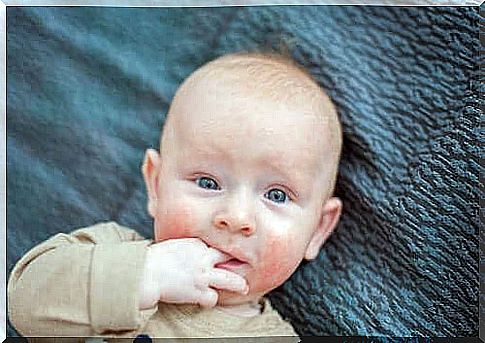
Constitutional eczema in babies is one of the most common skin conditions during the first months of a baby’s life. It is a chronic disease, which is why prevention is the most important when it comes to basic care. However, symptom relief is also very important.
Early detection of this dermatological condition, followed by proper treatment, will help reduce the symptoms and discomfort it brings.
What Is Atopic Eczema In Babies?
Constitutional eczema usually starts between the third and fifth month of a child’s life. At this stage, the skin lesions are more common. They usually develop in the form of outbreaks that last about six weeks, although they can last longer.
Constitutional eczema is an inflammatory skin condition that manifests as dry skin, which is one of the main symptoms. It is usually accompanied by intense itching.
The condition usually remains active until the child has reached the age of two. Then it can disappear completely, but sometimes children continue to suffer from it. This childhood disease also has a certain hereditary component. That is why you should also look at your family history.
When should you contact the pediatrician?
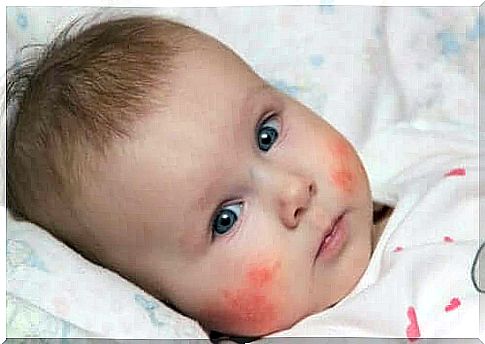
Constitutional eczema has no specific features. It varies from person to person. Therefore, it is very difficult to distinguish it from other forms of eczema. Only a pediatrician can diagnose it, after assessing the baby’s symptoms.
So you should consult your pediatrician if you notice any of the following symptoms in your baby:
- non-specific rashes, especially in the facial area and in the hollows of the knees and elbows
- rash that lasts for a while
- crying a lot, as the child may suffer greatly from the itching of this condition
How do you discover atopic eczema?
It can express itself in different ways. The most common are the symptoms that we will mention here. Most commonly, a rash appears on the cheeks, forehead, ears, and scalp. After that, these spots can spread to the rest of the body, starting with the face.
This is usually itchy eczema and sometimes some degree of exudation. It can also occur in combination with a protein allergy. Therefore, allergy testing should also be performed on a baby to make a diagnosis.
How do you prevent atopic eczema in your baby?
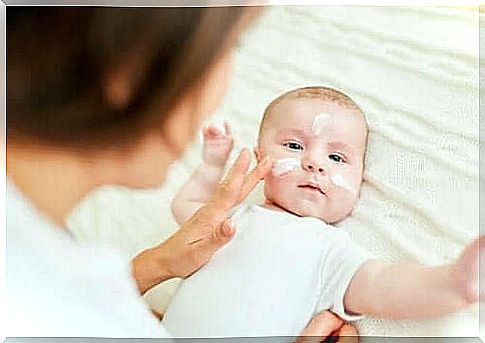
To take care of this form of eczema, it is best to follow the following tips:
- Wash your baby’s clothes with mild detergents and avoid fabric softener.
- Avoid heat, especially hot air. That is why you should avoid all woolen fabrics, plastics and certain fibers that promote sweat and therefore also rash. Use only cotton instead.
- Use humidifiers in a dry environment and in areas where the humidity is low.
- Don’t bathe or shower your baby for too long, or more than two or three times a week. Too much water and exposure to chemical products promote the development of skin rashes. Doctors recommend using acidifying pH gel or oatmeal.
- Apply moisturizing creams made especially for babies several times a day through a gentle massage. Make sure the skin absorbs the product well.
Medical treatment
There are situations where the symptoms of atopic eczema in babies require medical treatment and monitoring by a doctor to avoid complications, namely the following:
- It is necessary to consult a pediatrician to determine the pattern of anti-inflammatory treatment when there are outbreaks. You should also stop using the soothing lotions that you used during the prevention phase.
- To prevent the development of skin infections. These usually appear as a result of scratching after the itching starts. You should also ensure good hygiene.
If the pediatrician thinks there may be an infection, he or she may prescribe topical or systemic antibiotics.
The most commonly prescribed drugs for this condition are topical corticosteroids. You don’t have to be afraid to use them, as long as you do it correctly. They provide many benefits for babies suffering from eczema.

